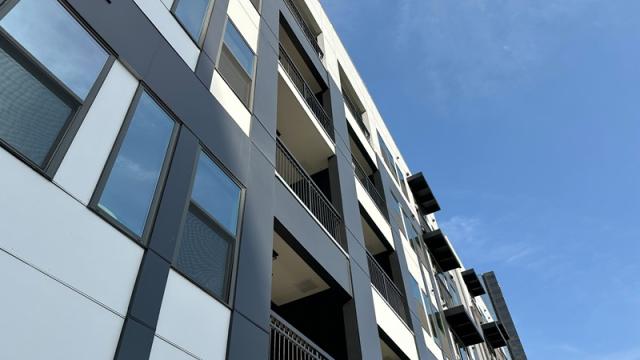webinar

Apartments.com

Multifamily Market Shows Early Signs of Stabilization
Following a challenging two years, 2024 has begun with some positive trends for the multifamily industry. In a recent webinar for Apartments.com, CoStar’s Jay Lybik painted a mixed but cautiously optimistic picture for the sector that has faced the brunt of high supply and weak demand in recent years. The national director of multifamily analytics highlighted the key takeaways from the first quarter and offered his predictions for the year ahead.
Slowing supply pipeline still continues to outpace demand
The first quarter of 2024 saw an increase in absorption and rebound in demand. A total of 104,000 units were absorbed in Q1, according to CoStar data. This marked the highest number since the third quarter of 2021.
However, this increase in demand is overshadowed by high supply. Even as it retreats from the 40-year high marked in 2023, new supply for 2024 remains above average. Dropping 15 percent from 583,000 last year, the 495,000 units projected to deliver this year are continuing to overwhelm demand, even as absorption picks up.
The vacancy rate is rising but stabilizing. The latest data shows a slight uptick from 7.7 percent at the end of 2023 to 7.8 percent in the first quarter of 2024. At the same time, rent growth deceleration appears to have slowed, hovering around the 1 percent range since mid-2023.
Luxury apartments struggle as mid-priced properties outperform
When broken out by price point, a clear divide emerges between luxury and mid-priced properties.
Luxury apartments, known as four- and five-star in the CoStar building rating system, make up 70 percent of new construction, which has suppressed rent growth to negative 0.2 percent.
Mid-priced, or three-star, apartments, on the other hand, are well above the national average for rent growth, posting 1.4 percent growth this year.
Absorption for this class in Q1 is significantly higher than in 2023. A total of 27,000 units were absorbed in the first 90 days of 2024, compared to the 17,000 during the same period last year.
The Sun Belt continues to struggle
From a regional perspective, the Sun Belt continues to bear the brunt of oversupply. Seven of 10 markets with the highest supply/demand imbalance are in the Sun Belt: Austin, Dallas–Fort Worth, Houston, Atlanta, San Antonio, Charlotte, and Tampa.
Compared to a rent growth average of 0.8 percent nationwide, the Sun Belt has seen asking rents reverse, falling to negative 1.4 percent year over year. The five hardest hit major markets nationwide are all in the Sun Belt:
Largest year-over-year drops in rent growth
- Austin (-5.7%)
- Jacksonville (-3.6%)
- Raleigh (-3.4%)
- Atlanta (-3.0%)
- San Antonio (-3.0%)
Midwest and Northeast pull ahead
Thanks to its healthy balance of supply and demand, the Midwest emerged in 2023 as a rent growth leader. Since then, the Northeast has been closing in on the Midwest’s lead. The Midwest saw a 2.5-percent increase in asking rent, as of the first quarter, while the Northeast wasn’t far behind, posting 2.1 percent in Q1.
All of the top 10 markets for rent growth are in the Midwest or Northeast. Coming in first is the Midwest’s Louisville, Kentucky, at 3.4 percent.
Greatest year-over-year increases in rent growth
- Louisville, KY (3.4%)
- Northern New Jersey (2.8%)
- Cleveland, OH (2.4%)
- Washington, D.C. (2.2%)
- Norfolk, VA (2.1%)
2024 offers a mixed outlook
What’s ahead this year? Lybik painted a picture of a muted recovery. All but two major markets are projected to return to positive rent growth this year, though 40 percent will likely fall short of their five-year pre-pandemic average.
Midwestern and Northeastern markets are best positioned for success, as are three-star apartments. The road to recovery will be tougher for Sun Belt markets and luxury apartments.
Despite the positive trends of growing demand, slowing supply, and stabilizing vacancy, Lybik pointed to the health of the economy as a major wildcard.
High inflation and the potential for recession pose significant risk, he said.
“A recession is still possible, as stubborn inflation may force the Federal Reserve to resume hiking short-term interest rates,” Lybik said. “This represents a significant downside risk for multifamily fundamentals, right when demand appears the strongest in two years.”
CoStar is the industry-leading source for information, analytics, and news about all areas of commercial real estate. Whether you’re an owner, investor, or apartment operator, you’ll find in-depth analysis from Jay Lybik and other experts to help you stay on top of the latest trends in the market. Learn more about CoStar.







